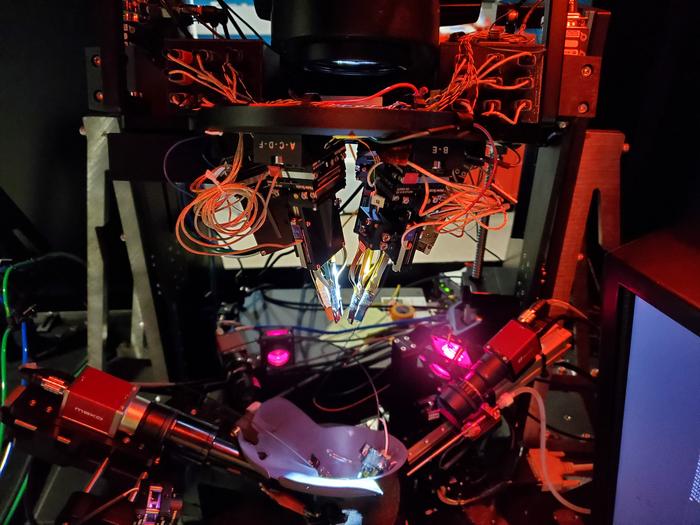Every illusion has a backstage crew. New research shows the brain’s own “puppet strings”—special neurons that quietly tug our perception—help us see edges and shapes that don’t actually exist. When four black “Pac-Man” shapes suggest a glowing white square (known as the Kanizsa square), nothing square lands on the retina. Yet we swear we see crisp edges. A study, titled “Recurrent pattern completion drives the neocortical representation of sensory inference,” and published in Nature Neuroscience, now exposes the hidden circuitry that makes this sleight of mind possible.
Led by Hillel Adesnik, PhD, with first author Hyeyoung Shin, PhD (now at Seoul University), researchers at the University of California, Berkeley, partnered with the Allen Institute in Seattle to investigate how the brain infers objects from partial information. They focused on illusory contours, the phantom borders our brains fill in to complete a picture.
Using mice, the team deployed a formidable toolkit: large-scale Neuropixels electrophysiology, mesoscale two-photon calcium imaging, and cutting-edge two-photon holographic optogenetics. This “read–write” setup lets them both monitor and directly stimulate individual neurons in real time (read more about OpenScope here). “In stage I (the ‘read’ stage), we recorded the visual responses of several thousand V1L2/3 neurons to the IC image set. In stage II (the ‘online analysis’ stage), we analyzed the visual response properties of every neuron in the field-of-view to identify IC-encoders and segment responders. In stage III (the ‘write’ stage), we holographically stimulated distinct functional ensembles in the absence of visual inputs, while simultaneously imaging the same field-of-view,” the authors wrote.
Their quarry was a rare subset of primary visual cortex (V1) neurons they dubbed IC-encoders. Unlike ordinary cells that react to straightforward visual contrast, these neurons fired as though they were seeing real edges—even when only suggestive fragments were present. Higher visual regions first detected the illusory shape, then sent top-down signals instructing V1’s IC-encoders to draw the missing lines.
To demonstrate causality, the researchers shone patterned holographic light onto these neurons in the dark. Remarkably, the V1 network produced the same activity seen during an actual illusion. This “recurrent pattern completion,” as the authors call it, shows that perception is less like a camera and more like an active computation that stitches experience and expectation into a coherent scene.
“Because IC–encoder neurons have this unique capacity to drive pattern completion, we think that they might have specialized synaptic output connectivity that allows them to recreate this pattern in a very effective manner,” Shin said, adding: “We also know that they receive top-down inputs from higher visual areas. The representation of the illusion arises in higher visual areas first and then gets fed back to the primary visual cortex; and when that information is fed back, it’s received by these IC encoders in the primary visual cortex.”
Understanding these neural “puppet strings” matters well beyond optical parlor tricks. Jerome Lecoq, PhD, an Allen Institute investigator, noted that aberrant object representations are central to disorders such as schizophrenia: “If you don’t understand how those objects are formed and a collective set of cells work together to make those representations emerge, you’re not going to be able to treat it; so understanding which cells and in which layer this activity occurs is helpful.”
The findings suggest that active feedback between higher and lower visual areas selectively reinforces signals that match prior expectations. By revealing the neurons behind the curtain, the Berkeley–Allen team shows that every glance is a negotiation between light and memory. Our brains aren’t passive recorders—they are master illusionists, quietly pulling the strings of reality itself.

